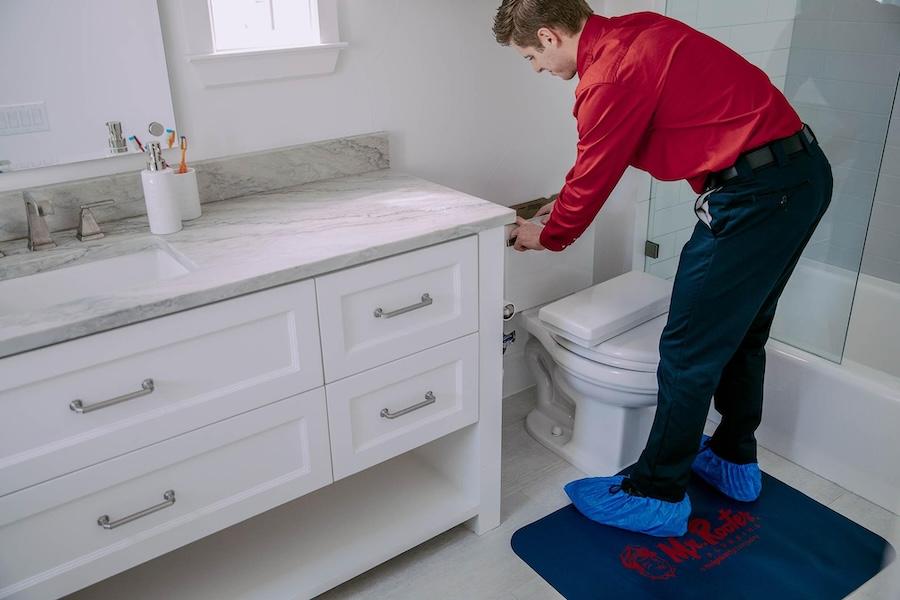Call This Saturday to Get $50 OFF
Call us Now to Get $50 OFF.
Ratings based on 6379 reviews
Local Plumbers, Local Reviews
Call This Saturday to Get $50 OFF
Call us Now to Get $50 OFF.
Ratings based on 6379 reviews
Local Plumbers, Local Reviews

Tampons are an essential part of daily life for many. However, people are still unaware of the proper ways of disposing of them. With many ways to dispose of them, flushing tampons down the toilet seems convenient. However, it can have surprising effects on your plumbing system, the environment, and the wastewater treatment facilities. In this article, we will review the impact of flushing tampons down the toilet and explore a few items that should never be flushed. If you want to learn more, call Mr. Rooter Plumbing today.
Let’s answer this question. The short answer is that tampons shouldn’t be flushed. Tampons are designed to absorb large volumes of fluid and expand accordingly. When you flush tampons, pads, or other feminine hygiene products down the toilet, you risk clogging up the pipes and drains that lead away from it. If these pipes or drains are clogged, they can lead to backups of toilets and even cause house flooding. Even if they do make it past the pipes or drains of your home, the tampons will end up in the public sewer treatment facilities and waterways. This can result in expensive maintenance for wastewater treatment facilities.
Tampons can also cause significant environmental harm. The previous section mentioned the effects of flushing down tampons on a plumbing or sewer system. However, they also have environmental effects. Tampons can escape the treatment plans due to temporary blocks or system failures. When they escape, they end up in nearby bodies of water like rivers, oceans, or even natural habitats. Some of these tampons are made of microplastics that harm the entire ecosystem and marine life. So, while it may seem convenient to flush it away, the damage that it can lead to outweighs the convenience.
Flushing feminine hygiene products down the toilet can lead to extensive plumbing and environmental harm. However, similar items can result in the same problem. Let’s go over a list of some of these items.
Are you looking for an experienced contractor you can trust for your residential plumbing service? At Mr. Rooter Plumbing, we are here to take your call anytime. With our affordable price plans, exceptional customer service, and team of professional plumbers, we are here for you. Call us today to learn more about us and our services.
A gas smell in the kitchen can seem harmless at first, but it is an early warning sign…
Read MoreSeptic professionals visit your property to do a thorough examination of your septic system to ensure everything is…
Read MoreMost homeowners don’t think about their septic system until they smell something wrong. The septic system plays a…
Read MoreFaucets are no longer just boring, functional fixtures in homes. They are a sign of you, your energy,…
Read MoreExperiencing water damage due to unnoticed early signs of pipe damage can be devastating for many homeowners. Unfortunately,…
Read More